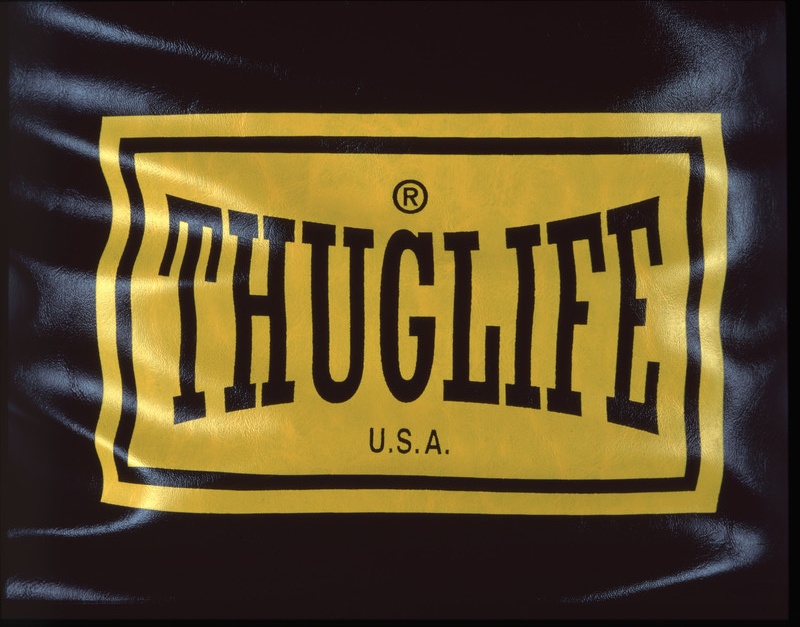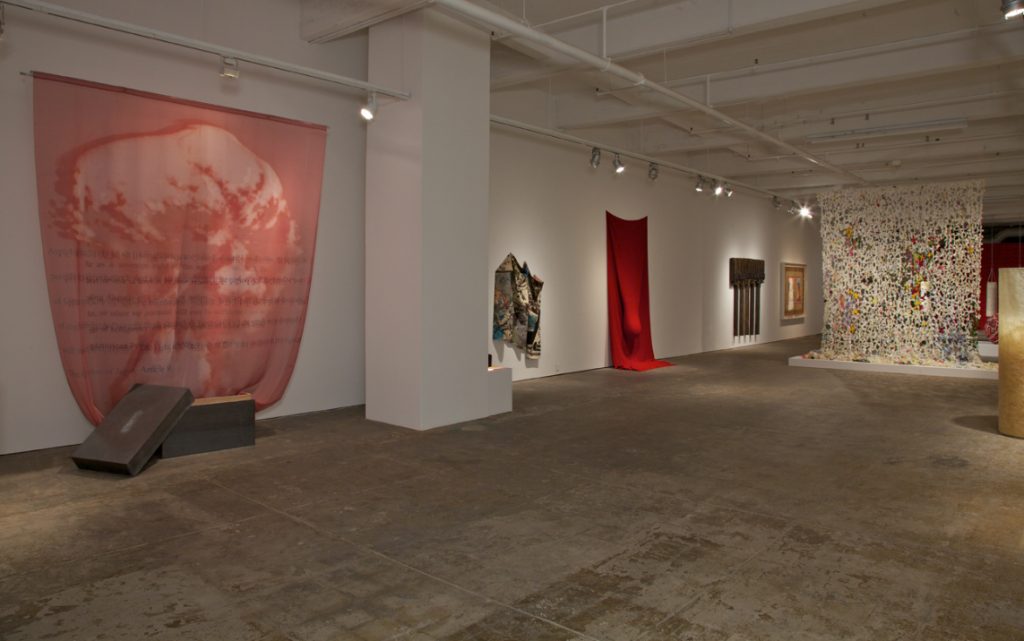Skin Tight is Glenn Ligon’s first major sculptural work. Building on his Whitney Museum project—a single standard-issue punching bag with stencilled text borrowed from The Greatest, a film about Muhammad Ali—Skin Tight is an investigation into the form and symbolism of the punching bag and its connection to American societal ideas of black men, boxing, and rap music.
Though Ligon wanted this series of eight punching bags to look and feel like authentic bags, he also wanted to individualize each bag and create a strong statement formed by a series of distinct “voices.” A standard Everlast™ bag was disassembled and used as a pattern for making the series in a range of fabrics, including canvas, vinyl, and satin. Ligon then designed patterns for silkscreen printing—one bag depicts an image of Muhammad Ali, another the rapper Ice Cube’s glaring eyes. A black vinyl bag is printed with the altered logo “Thuglife,” which alludes not only to the Everlast™ logo but also to the slogan tattooed on the late rap artist Tupac Shakur. One bag is covered with clear plastic pockets, a reference to the idea that the image of any opponent could be inserted and used to rouse the anger of the punching bag’s user.
Collectively, the punching bags of Skin Tight convey a physical presence, as if each bag represents a body, and specifically a black male body. One is glorified and heightened with the sheen of satin fabric; another, made from black vinyl, is slumped on the floor, a defeated and limp form.


